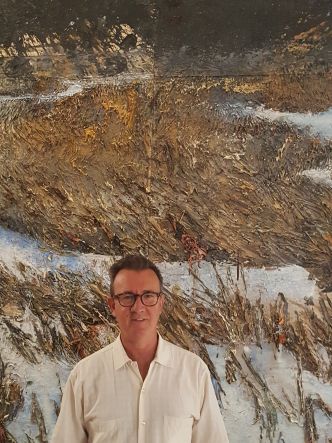Prof. Dr. Stefano Riccioni
Gastwissenschaftler

Stefano Riccioni has an M.A. in Humanities (Art History) with a thesis on Medieval art history (University of Florence), a Diploma in Archive Studies, Palaeography and Diplomatics (State Archives of Rome), and a PhD in Art History with a thesis on Medieval art history (La Sapienza University of Rome), and was awarded the Licence in Mediaeval Studies (Pontifical Institute of Mediaeval Studies of Toronto). He has held fellowships from various Italian and foreign research institutions including the Ecole Française de Rome, the Pontifical Institute of Mediaeval Studies of Toronto and The Getty Foundation of Los Angeles, and was assistant professor at the Scuola Normale Superiore of Pisa. He is currently Associate Professor of History of Medieval Art at the University Ca’ Foscari of Venice and chercheur associé (associate researcher) at the CNRS, UMR 5594 - ARTeHIS (CEM Auxerre and University of Dijon).
Stefano Riccioni’s main research interests are in Medieval Art History, Medieval Epigraphy and the Mediterranean area as a centre of cultural exchange between East and West. His interdisciplinary approach aims to focus on iconographic and iconological investigation, the reception of works of art, their audience and patrons. Major topics include: relationships between text, script and image in visual arts related to their space and environment and a methodological proposal called “Epiconography” which aims to consider the inscribed monument as a “complex visual discourse”, a linguistic unit created according to its public (or private) exhibition. His most influent scientific contributions deal with case studies linked to these major topics: theory and artistic and graphic production during the Church Reform (11th-12th cent.) in Rome and Europe; signatures of medieval artists as an insight into their literacy and ‘culture’; History of Art and conservation of Cultural Heritage in Armenia and Subcaucasia; visual representations of animals (monumental Bestiary); artistic production in Venice and the Adriatic area (9th-14th century); relationships between publishing, exhibitions and museums.
OSCHLOP: Observing South Caucasus Historical Landscape: an Open Photo Library (In collaboration with the KHI)
The observation of the natural and monumental landscape through images means the observation of communities. In Venice, there is a valuable and unknown collection of photos shot in the soviet period by a group of eminent scholars lead by Adriano Alpago Novello. The OSCHLOP project aims to promote the Alpago Novello’s collection to open new research frameworks in the contemporary historical and theoretical context while adding value and rebuilding the great legacy rooted in Venice in the study of Eastern Christian cultures.
Adriatic monastic landscape
The research project aims investigate artistic production related to monastic sites in the Adriatic area between the 6th and 12th centuries. In particular, medieval monasteries of the Venetian area (7th-12th centuries) played a fundamental and specific role in the formation of lagoon settlements and land transformation within a coastal landscape marked by river mouths, in an area not yet configured as a lagoon, the meeting point of the Adriatic sea routes with the routes (of land and water) of the hinterland.
Medieval Bestiary in Venice
Venice, during the Middle Ages, became populated with animals, depicted both on the walls of churches and palaces and inside them, but especially open air in “calli” and “campi”, thus telling myths and stories that reveal the identity of the city and the men who populated it. The project aims to narrate the history of Venice as a product of the relationship between humans and the lagoon environment that imposes precise, and unique, rules of coexistence with nature.
Church Reform and European art in XII century
Recent studies have confirmed the existence of a theory of art during the Church Reform (11th-12th cent.) The research aims to investigate specific Italian and European artistic productions that can be related to the ecclesiastical reform movement.


